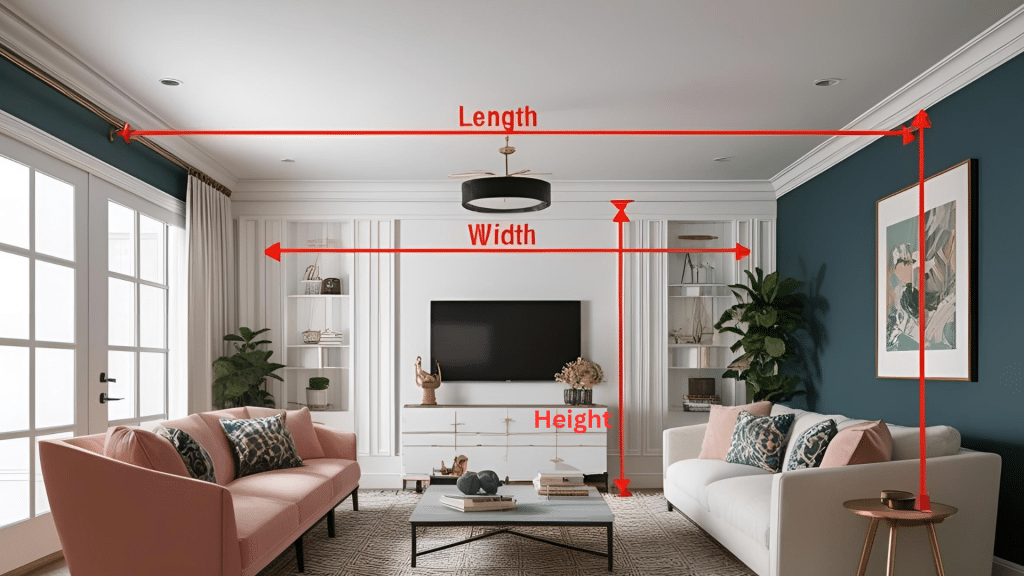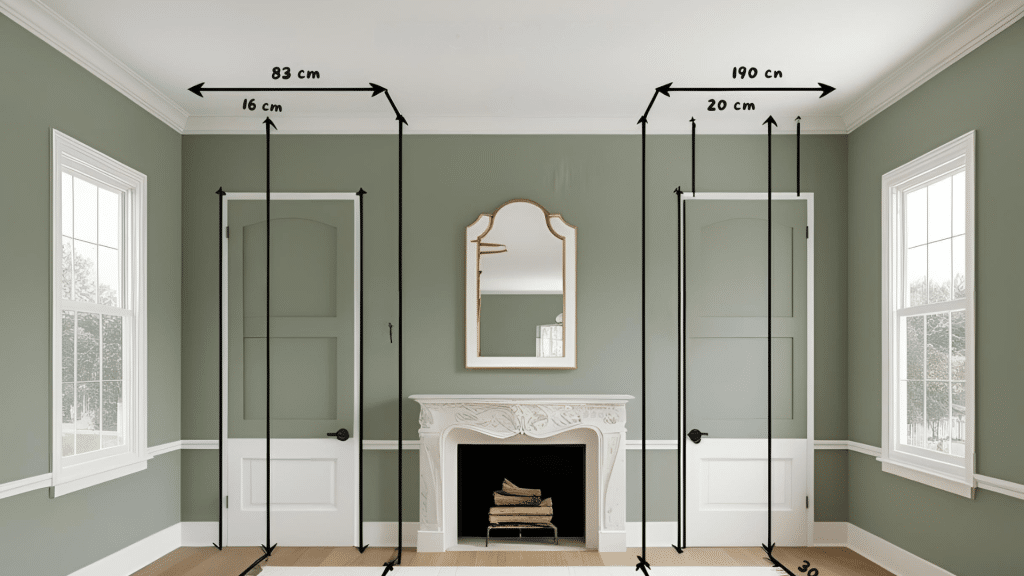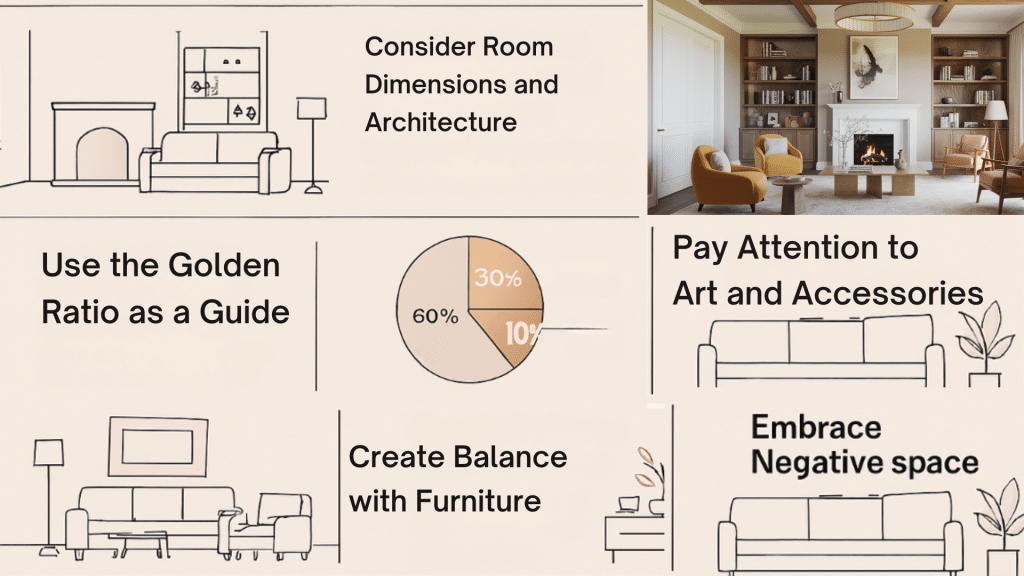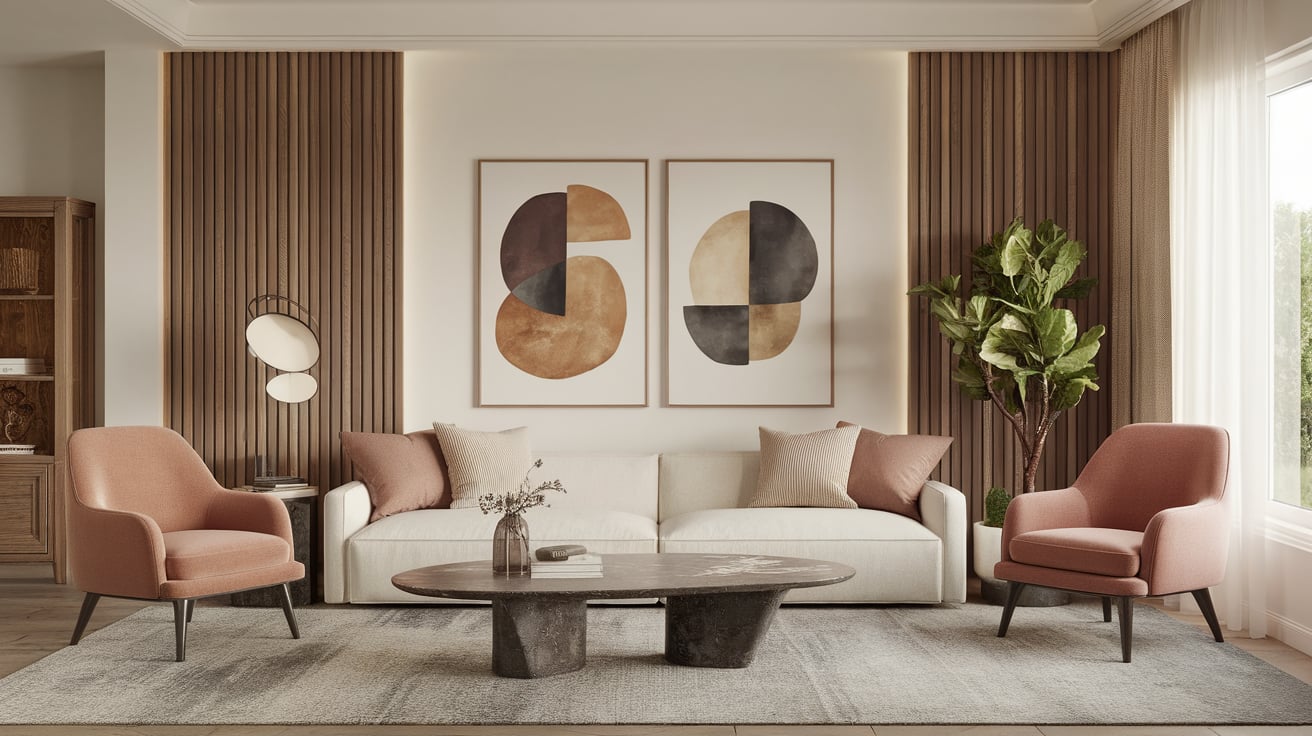Mastering Scale in Interior Design
Does your living room feel cramped even though you have plenty of space? Or maybe your furniture looks lost in a large room?
You’re dealing with a scale problem. Many homeowners struggle with selecting the right-sized furniture for their rooms. Too big, and you can’t move around comfortably. Too small, and the space feels empty and cold.
Scale in interior design is about making furniture work with your room size and with each other. When you get it right, your home feels balanced and inviting.
This guide will show you how to measure your rooms accurately, select furniture that suits your space, and achieve visual balance.
You’ll also learn common mistakes to avoid and practical tips for making any room feel just right.
What Is Scale in Interior Design?
Scale in interior design refers to the relationship between objects and the size of a space, as well as the relationship between objects and their relative positions to one another.
It’s about creating visual harmony through the careful selection and placement of furniture, art, and accessories that work together in relation to the room’s dimensions and to each other.
While scale and proportion are sometimes used interchangeably, they have slight differences:
- Scale focuses on how an item relates to the size of the room and the human body.
- Proportion concerns the relationship between different objects within the space.
When scale and proportion are correctly balanced, a room feels unified, comfortable, and visually pleasing.
Why Is Scale Important in Interior Design?
The right scale creates:
- Visual balance – preventing rooms from feeling too cramped or too empty
- Functionality – ensuring furniture fits human needs while working within the space
- Comfort – creating spaces that feel welcoming rather than awkward
- Flow – allowing for proper movement throughout the room
- Focus – highlighting essential elements without overwhelming the space
Room Measurement Basics for Designers
Accurate room measurements are essential for creating well-balanced, functional, and aesthetically pleasing interiors, ensuring every element fits perfectly within the space.
1. Length, Width, and Ceiling Height Measurement

Begin by using a measuring tape and a notebook. Measure the length and width of the wall from wall-to-wall at floor level. For best results, check measurements in multiple spots. Some walls may not be perfectly straight.
Always record your numbers immediately. This helps avoid mistakes when shopping for furniture in the future. Measure the distance from the floor to the ceiling in the center of the room to determine the ceiling height.
Use a laser measure tool for hard-to-reach spots. These tools provide quick, accurate numbers with minimal effort. Metal tape measures work well for most jobs, while cloth ones bend easily for odd shapes.
2. Accounting for Architectural Details

Note the size and location of all doors in your room. Measure the width of the door and the distance it swings open. This will affect where you can safely place furniture.
Windows need extra attention. Measure from the floor to the windowsill and note the total window size. This matters for the placement of curtains and furniture underneath.
For fireplaces, record the height, width, and the distance it extends from the wall. The space around fireplaces often needs to stay clear for safety reasons.
Make a simple room sketch with all measurements. Mark outlets, vents, light switches, and built-in fixtures as well. These small details can limit the placement of large pieces later.
How to Make Your Home Look Balanced with Scale
Learn how to achieve harmony in your home by understanding and applying the right scale in your interior design for a balanced and cohesive look.

1. Consider Room Dimensions and Architecture
A room’s physical features set the stage for everything else. Ceiling height matters; tall ceilings can handle larger, taller furniture and artwork, while rooms with low ceilings need lower-profile pieces to avoid feeling cramped.
Room size naturally dictates the scale of furniture, too. My smaller rooms need appropriately sized furniture with space to move around, while my larger rooms require substantial pieces to avoid feeling empty and cold.
I’ve learned to work with existing architectural features rather than against them. Fireplaces, windows, and built-ins should guide your furniture choices, rather than competing with them.
2. Use the Golden Ratio as a Guide
I find the golden ratio (1:1.618) incredibly helpful when making scaling decisions. In practical terms, this translates to the 60-30-10 rule, dedicating 60% of space to a dominant element, 30% to a secondary element, and 10% to accent pieces.
This principle also works wonderfully for furniture groupings. My coffee tables look best when they’re about two-thirds the length of the sofa they accompany.
Following this natural proportion creates spaces that feel “right” to the human eye.
3. Create Balance with Furniture
Finding balance means matching furniture to the room size. I avoid sectionals that eat up an entire living room; they leave no breathing space.
Visual weight matters too; darker, bulkier pieces feel heavier than light, delicate ones, even if they’re the same size. I always include a mix of heights in my rooms to create visual interest and movement.
Thoughtful grouping makes conversation areas that work naturally together. A helpful tip I follow is that furniture should occupy about 60% of floor space, leaving 40% open for easy movement.
4. Pay Attention to Art and Accessories
Small details make significant differences in scaling. Artwork generally looks best covering about 2/3 to 3/4 of the wall space above furniture.
I position mirrors to reflect something interesting, ensuring they’re properly sized for the wall. For accessories, I keep them proportional to the surfaces they sit on, typically no taller or wider than 1/3 the length or height of the furniture piece.
This creates a natural visual hierarchy that doesn’t overwhelm the space.
5. Embrace Negative Space
I’ve learned not to fill every inch of my room. Negative space, those empty areas, allow the eye to rest and create a sense of openness. These breathing spaces highlight essential design elements, preventing rooms from feeling cluttered.
Sometimes, what you leave out matters as much as what you put in.
Scale in Interior Design: Pitfalls to Watch Out For
| Common Scale Mistakes | Description & Recommendations |
|---|---|
| Rugs That Are Too Small | Fit rugs under the front legs of seating furniture. Extend rugs 18 inches beyond each side of the bed. Ensure dining room rugs allow chairs to remain fully on the rug when pulled out. |
| Wall Art Hung Too High | Hang artwork at eye level (center at 57-60 inches from the floor). Prevents imbalance and awkward visual perception. |
| Oversized or Undersized Furniture | Avoid overly large pieces that crowd your space. Steer clear of furniture that’s too small and disconnected. Always measure rooms and evaluate traffic flow first. |
| Ignoring Ceiling Height | Match furniture and décor to the ceiling height. High ceilings: Use taller furniture, window treatments, and artwork. Low ceilings: Emphasize horizontal lines. |
| Too Many Small Items | Group small objects thoughtfully. Balance smaller items with larger furniture to avoid visual clutter. |
Final Thoughts
Getting scale right in interior design changes awkward spaces into comfortable, balanced rooms. When your furniture fits your space properly, everything feels natural and inviting.
Start with accurate measurements and follow the key rules: furniture should occupy 60% of the floor space, leave 30 inches for walking paths, and artwork should cover two-thirds of the wall space above furniture.
Mix different heights and sizes, but keep them proportional to your room and each other. Trust your instincts if something feels off; it’s likely a scale issue.
Your home should work for how you live. With these scale principles, you can create spaces that are both beautiful and functional.
What’s your biggest furniture scale challenge? Share your thoughts in the comments, we’d love to help you solve it.
Frequently Asked Questions
What Is Scale in Design?
Scale in design refers to the size relationship between different elements and how they fit together in a space.
What Scale Do Interior Designers Use?
Interior designers commonly use a 1/4-inch scale, equivalent to 1 foot, for floor plans and furniture layouts.
What Is the Scale in House Design?
House design typically uses a 1/4-inch scale for floor plans and a 1/8-inch scale for site plans, corresponding to 1 foot per inch.







